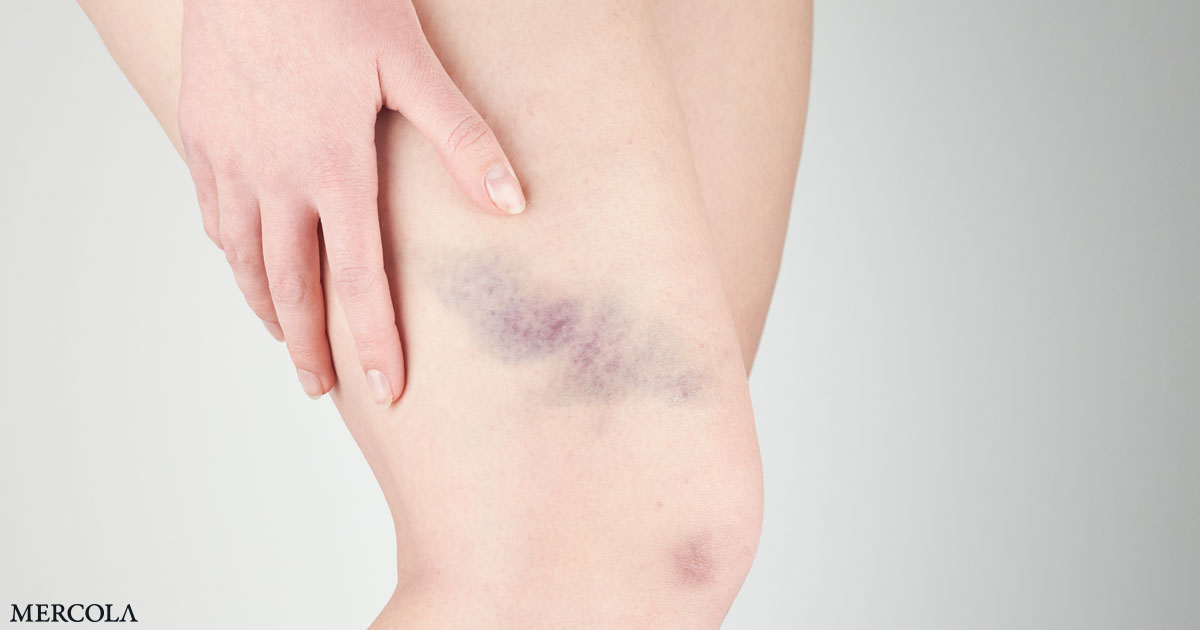
Any type of traumatic injury, such as a fall, can cause capillaries, or small blood vessels, near your skin’s surface to break and leak red blood cells. This causes the reddish-purple or “black and blue” appearance of bruises on your skin. Technically known as contusions, bruises may result from virtually any injury to blood vessels in your skin.
As your body begins to heal and metabolizes the blood cells, the bruise will typically fade to a green, yellow or brown color before disappearing entirely. It’s virtually inevitable that you’ll get a bruise once in a while, but if you have bruises appearing often and can’t figure out why, there could be an underlying reason. You may have simply bumped your arm or leg and forgotten, or it could be something else entirely.
There are many reasons why you may be prone to bruising. Old age, genetics, pale skin, increased strain during exercise and sun damage are among the most common. Diseases such as diabetes, purpuric dermatosis or blood disorders like leukemia may make you prone to easy bruising too.
1. Your age — As you get older, your skin loses some of the protective fatty layer that provides cushioning against bumps and falls. Your skin also becomes thinner while the production of collagen slows. This means that it generally takes much less force to cause a bruise than it did when you were younger.
2. Purpuric dermatosis — This vascular condition, which is more common in the elderly, causes thousands of tiny bruises, often on your shins, which may have the appearance of cayenne pepper from afar.1 The bruises are the result of blood leaking out of small capillaries.
3. Blood disorders — Blood disorders such as hemophilia and leukemia can cause unexplained bruising, often because your blood fails to clot properly. If you have severe and frequent unexplained bruising, it’s a good idea to see a physician to rule out such disorders, especially if it seemed to come on suddenly.